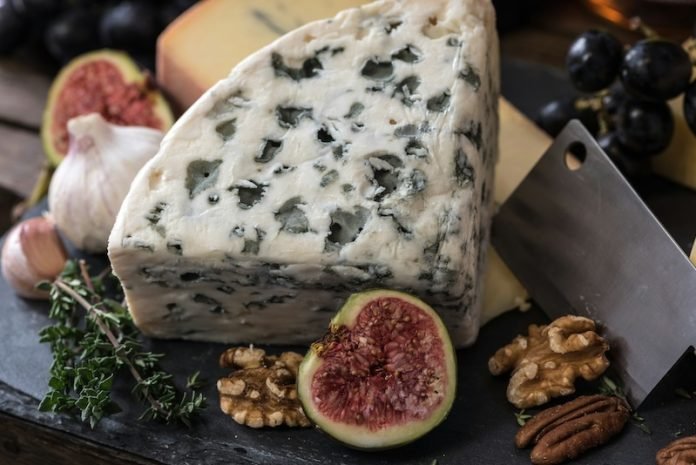
Scientists from the University of Nottingham have made a colorful breakthrough in the world of cheese-making.
By delving into the secrets behind the classic blue-green veining of blue cheese, they’ve unlocked the potential to produce cheese in an array of colors, including white, yellow-green, red-brown-pink, and various shades of blue.
Their innovative research, published in the NPJ Science of Food journal, revolves around manipulating the fungus Penicillium roqueforti, traditionally used to give blue cheese like Stilton, Roquefort, and Gorgonzola their distinctive appearance and taste.
The team, led by Dr. Paul Dyer, a Professor of Fungal Biology, embarked on a journey to understand how this fungus produces its pigmented spores.
Through bioinformatics, gene editing, and gene expression techniques, they decoded the biochemical pathway responsible for the fungus’s color transformation.
The pathway starts with a white pigment and progresses through several colors, ending in the familiar dark blue-green of classic blue cheese.
By employing traditional food-safe methods, the researchers were able to “block” this pathway at specific points, creating fungal strains that produce a variety of new colors.
This approach not only introduces a visual novelty but also allows for the exploration of new flavors in cheese production.
The project marks a significant step in Dr. Dyer’s decade-long fascination with cheese fungi and their potential for innovation in mold-ripened cheese varieties.
Interestingly, the team discovered that the newly created cheese strains maintained a taste profile similar to their original blue counterparts, according to lab analyses.
However, taste trials with university volunteers revealed that the perception of flavor varied with the color of the cheese. Lighter strains were perceived as milder, while darker ones seemed more intense.
Some of the more uniquely colored cheeses, such as the reddish-brown and light green varieties, were thought to have a fruity, tangy twist.
This exploration into how visual cues influence taste perception highlights the complex interplay between our senses.
The research not only paves the way for a broader palette of cheese colors and flavors but also explores how these sensory attributes can attract new consumers to the world of blue cheese.
With the successful creation of these colorful cheese variants, the team is now looking to collaborate with cheese makers in Nottinghamshire and Scotland to bring these innovations to the market.
Additionally, a university spin-out company named Myconeos has been established to explore commercial opportunities for these novel fungal strains.
Dr. Dyer expresses optimism about the future of these colorful cheeses, suggesting they might offer consumers a unique sensory experience and potentially attract new enthusiasts to the blue cheese category.
This venture into uncharted territory of cheese-making not only promises an expansion of culinary possibilities but also demonstrates the impact of scientific curiosity and innovation on traditional food industries.
The research findings can be found in npj Science of Food.
Copyright © 2024 Knowridge Science Report. All rights reserved.



